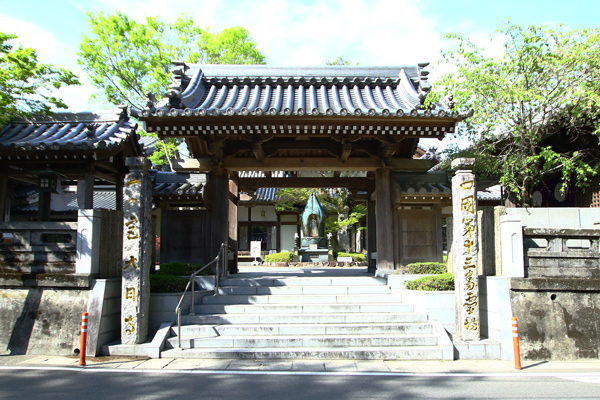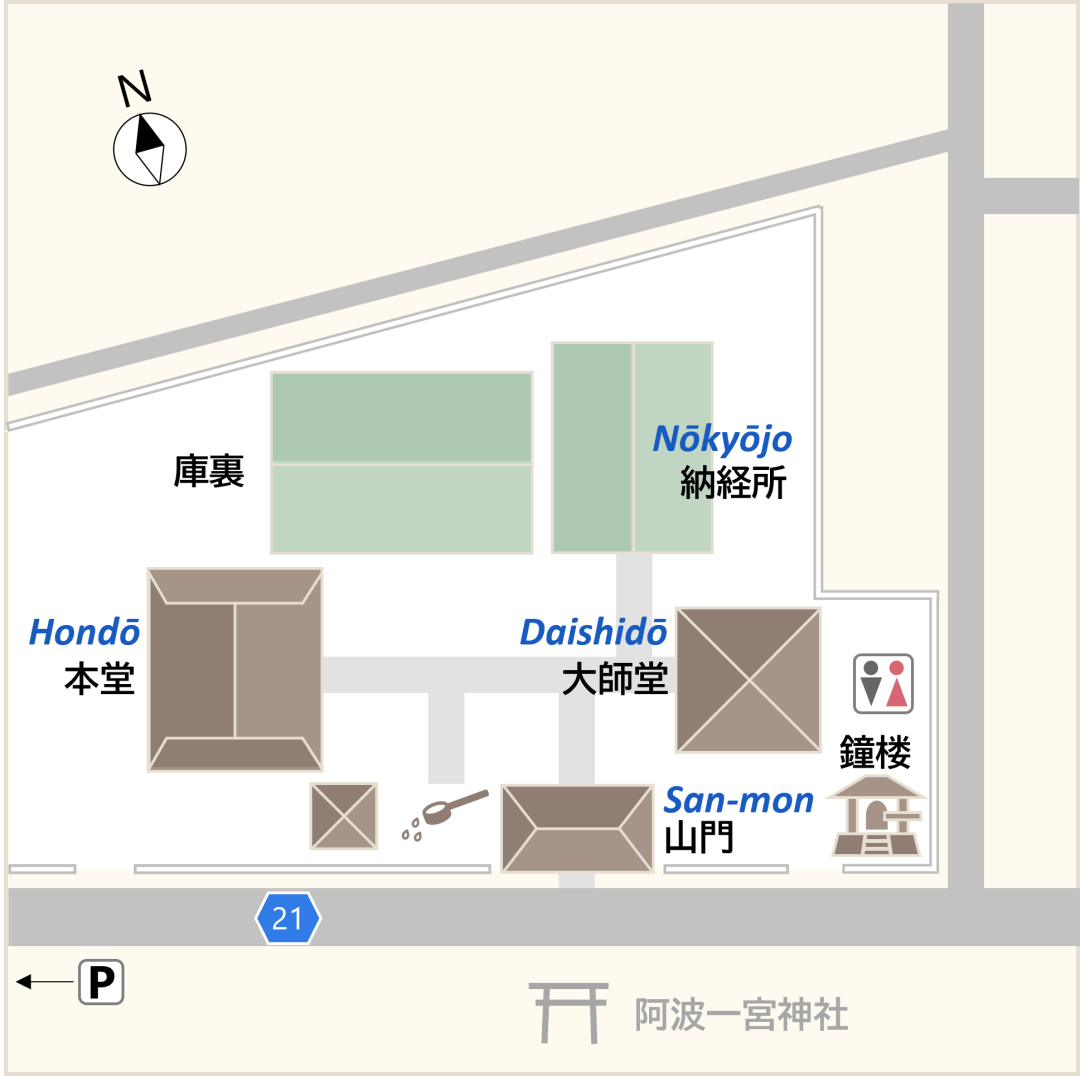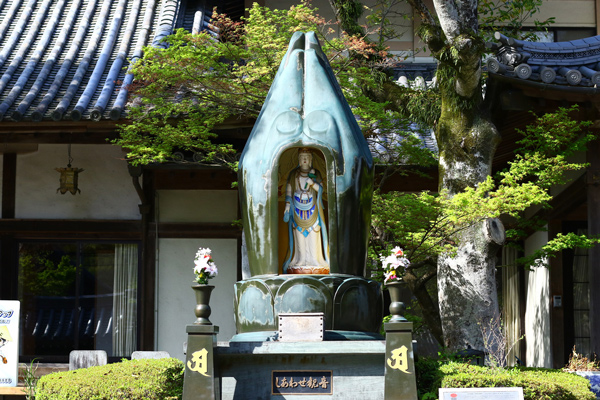The Shikoku Pilgrimage Temple Guide
Temple 13, Dainichiji

Precinct map

History of the temple
There are five temples of the Shikoku Pilgrimage in Tokushima City. Dainichiji Temple is the westernmost of them, located on flat land next to the Akui River. On the other side of the prefectural road is the Ichinomiya Shrine, which is the shrine of the guardian deity of Awa (Tokushima). The temple is believed to have been founded by Kobo Daishi. According to legend, Kobo Daishi was practicing Buddhist training in this area when Dainichi Nyorai (Mahāvairocana) appeared in a purple cloud. Dainichi Nyorai said, "This land is a sacred place. Build a temple here.” Kobo Daishi immediately did so. He carved a statue of Dainichi Nyorai as a principal image, built a temple, and enshrined the statue as the principal image. The temple's name also comes from this legend.
Today the grounds are covered with old trees, creating the atmosphere of an ancient esoteric Buddhist temple. However, no buildings remain from the early days as they were all burnt down by the attack by Chosokabe Motochika in the Tensho era (1573-1592). The present hondo was rebuilt in the early Edo period by Mitsutaka Hachisuka, the third lord of Awa.
In the past, the syncretism of Shintoism and Buddhism was common in Japan. When Ichinomiya Shrine was founded, Dainichiji Temple was placed within its precinct to manage the shrine. The shrine used to have the statue of Juichimen Kannon (Eleven-faced Bodhisattva Who Hears the Sounds of the World) by Gyoki as well. According to the Shikoku Henrodo Shinan (Shikoku Pilgrimage Guide, 1687) by Shinan, the Ichinomiya Shrine used to be a part of the Shikoku Pilgrimage in the Edo period (1603-1868). People visited its nokyojo (temple stamp office) to get their pilgrimage stamps. In the Meiji era (1868-1912), the temple and the shrine were separated by law. The temple resumed its original name of Dainichiji. The Juichimen Kannon image was moved from the shrine to the temple and became its principal image. The former principal image, the statue of Dainichi Nyorai, was moved to the side of Kannon.
In the hearts of the Japanese people, Buddha and God are still united in harmony. The Shikoku Pilgrimage continues to follow the heart of Kobo Daishi.
Highlights
Bokefuji Kannon
The temple has a statue of Kannon Bosatsu for preventing senility. The new inner temple, Kokuchuji, located about 0.7 km east of Dainichiji, is known for prayers for the elderly.
Shiawase Kannon Bosatsu
If you go through the gate with two stone pillars at the top of a few stone steps, you will see the Hondo and the Daishido facing each other. The Mizukake Koyasu Jizo (Earth Treasury Granting Easy Childbirth) and Kannon Bosatsu statues seem to be watching over visitors who come and go between the Hondo and the Daishido. In the center of the temple grounds, a statue of Shiawase Kannon is placed near a sacred tree whose branches spread over the statue like an umbrella. This small, brightly colored statue of Kannon holds a lotus in her hand, smiling and offering happiness to people.
Inner temple, Konchiji
Konjinotaki Falls is a temple site for ascetic practices, and if you apply, you can receive instruction in waterfall training.

Details
Names: Ōgurizan, Kezōin, Dainichiji
Denomination: Shingon sect, Daikakuji school
Principal image: Juichimen Kannon Bosatsu
Founder: Kobo Daishi
Founded: 815
Access
Address: 263, Nishi-cho, Ichinomiya-cho, Tokushima City, Tokushima 779-3132
Phone: 088-644-0069
Parking: 15 cars, 10 microbuses, 8 buses, free of charge
Lodging: Closed
Official website: http://dai13.jp/
Facebook: Dainichiji 大日寺
